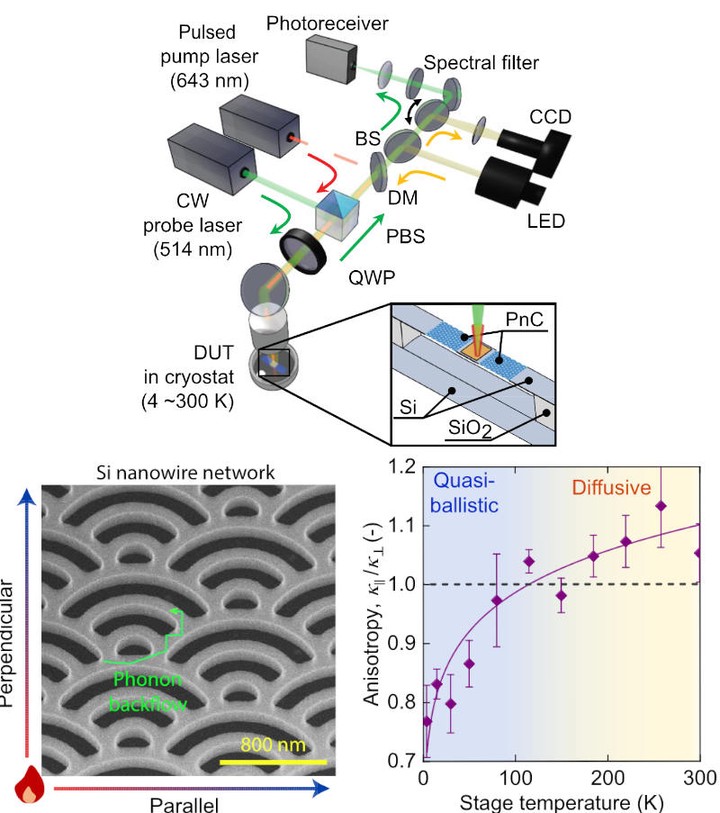Anisotropy Reversal of Thermal Conductivity in Silicon Nanowire Networks Driven by Quasi-Ballistic Phonon Transport

Abstract
Nanostructured semiconductors promise functional thermal management for microelectronics and thermoelectrics through a rich design capability. However, experimental studies on anisotropic in-plane thermal conduction remain limited, despite the demand for directional heat dissipation. Here, inspired by an oriental wave pattern, a periodic network of bent wires, we investigate anisotropic in-plane thermal conduction in nanoscale silicon phononic crystals with the thermally dead volume. We observed the anisotropy reversal of the material thermal conductivity from 1.2 at 300 K to 0.8 at 4 K, with the reversal temperature of 80 K mediated by the transition from a diffusive to a quasi-ballistic regime. Our Monte Carlo simulations revealed that the backflow of the directional phonons induces the anisotropy reversal, showing that the quasi-ballistic phonon transport introduces preferential thermal conduction channels with anomalous temperature dependence. Accordingly, the anisotropy of the effective thermal conductivity varied from 2.7 to 5.0 in the range of 4–300 K, indicating an anisotropic heat manipulation capability. Our findings demonstrate that the design of nanowire networks enables the directional thermal management of electronic devices.
ACS Nano 18, 15, 10557–10565 (2024)